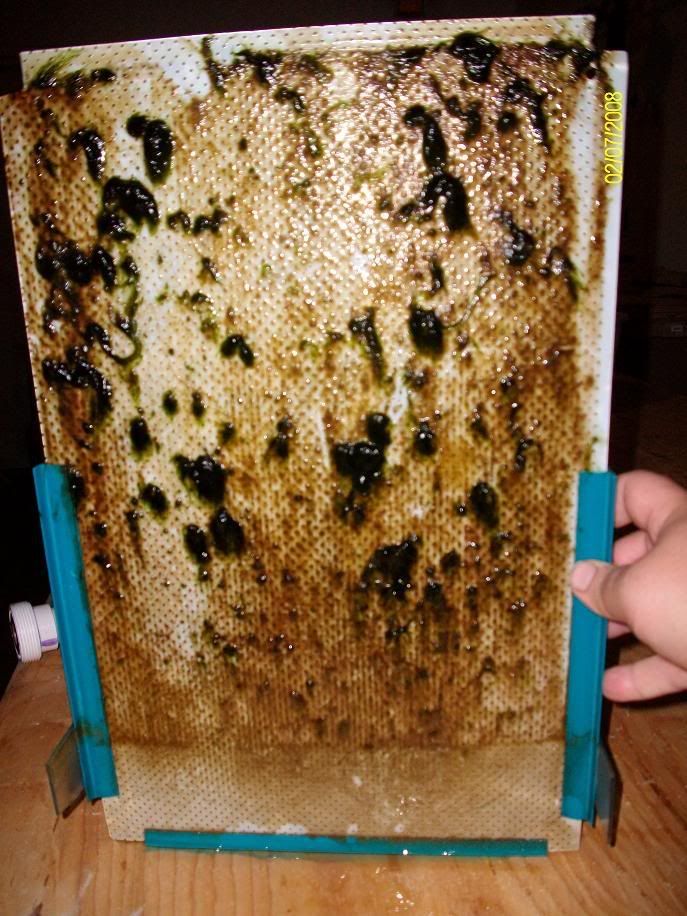santamonica
Member
Updates/Reminders:
Nano scrubbers: In my last update, I said a coffee can would make a good nano scrubber. I meant a plastic coffee can.
Wattage: Your goal should be to get at least 0.5 watts of CFL (compact flourescent light) for each gallon of water, for medium filtering. For high filtering, get 1.0 watts per gallon. And don't use incadescent bulbs... they are much too hot and use too much power. The biggest CFL bulbs you should use should be 45W. If you need more, use extra bulbs, not a bigger bulb.
Be sure not to run bulbs 24 hours.
Be careful of overflowing skimmers; there is a lot of ammonia in that skimmate. A scrubber will help eat that ammonia if it overflows.
If you have cyano on your screen, you need more flow and/or more light.
If you smell any kind of "algae" smell while the scrubber is running, you need more flow.
If your tank has gotten rid of the nuisance algae, but cyano seems to be increasing, this is normal. Cyano does not eat nitrate and phosphate like algae does, so after your scrubber has starved the nuisance algae, the cyano has more room to grow. But if you keep your scrubber running strong and proper, the cyano will fade too.
If you have rubbery green algae, it means the flow is getting cut off and the algae is baking.
The best current spectrum for the bulb is 3000K (550 nm). This is yellowish-greenish, and it fits right in the middle of the red and the blue peaks of photosynthesis:
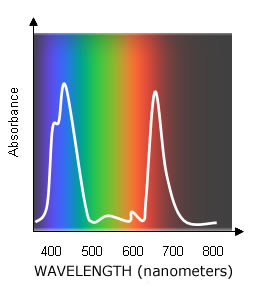
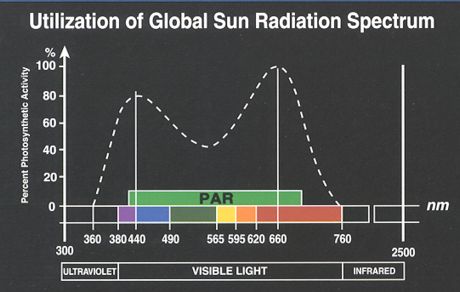
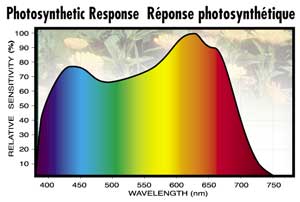
Pipe: Slots deliver much more water than drilled holes. Keep this in mind when figuring out how much flow you need.
Sump growth: Some people have open bulbs which light up the sump, and they are growing algae there. You don't want this to happen, so you need to use reflectors, or even foil, to block the light.
Coralline: Since phosphate will slow down coralline growth, you will start seeing more coralline as your phosphate drops in your water.
Advanced DIY trick: For those who can build such a thing, if you could build a top-off device which would shut off the flow to the screen, and then run your FW top-off water on it, then switch back to the regular flow, you would be able to extend the time between cleanings because the pods would be kept in control.
Dead fish: Scrubbers handle dead fish wonderfully; since ammonia is algae's favorite food, when a fish dies the algae will consume as much of the ammonia as it can, which could save your tank if the fish dies overnight. A skimmer, however, does not remove ammonia at all.
What equipment comes first: With regard to scrubbers, here are a few points to consider when planning which device should come before which other device (if you use them):
Skimmer: It should come before the scrubber and after the display, so that it does not remove the pods that come from the scrubber (if you need pods).
UV: Also should come before the scrubber and after the display, for same reason.
Mechanical filters/socks: Same as UV and skimmer. These trap food and pods (which rot and add Nitrate and Phosphate to the water), and thus should be the first thing you should stop using unless you change/clean them daily (but then you are removing the food for the corals.)
/>
PO4/N03 removers: Really doesn't matter because N and P are the same throughout the system.
Fuge LR/LS/Macro: Doesn't matter, as far as nutrient removal is concerned.
Bio Balls (!): Should be removed slowly, unless you have massive amounts of fish, and little rock/sand.
Screens: I will be selling ready-to-use screens soon. But until then, it's best to use two layers of extremely-rough plastic canvas, using a hole-saw (and about an hour) to rough up all four sides of the two sheets:
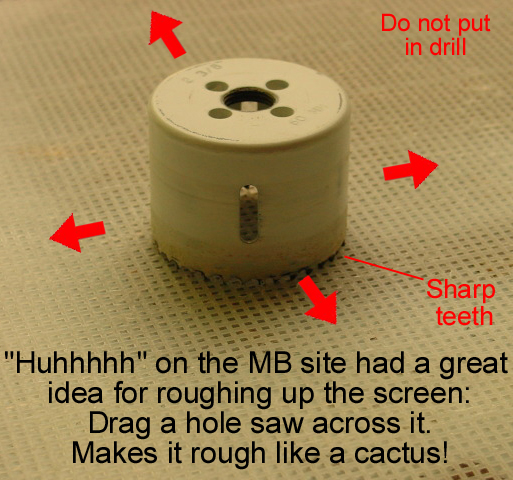
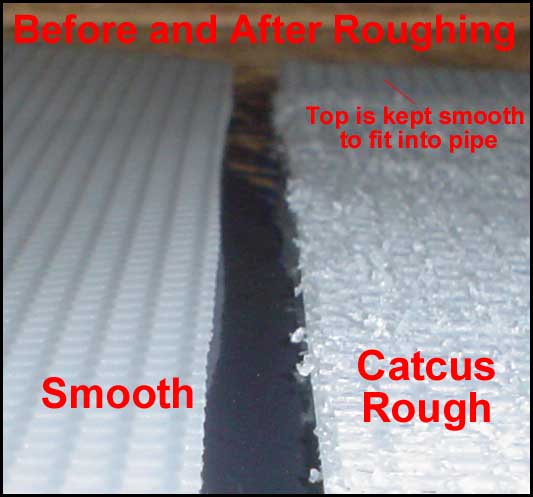
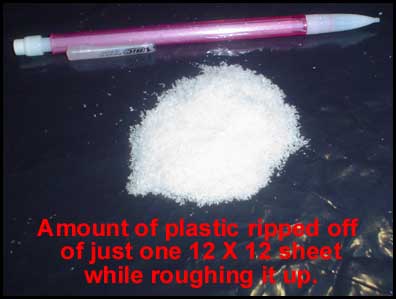
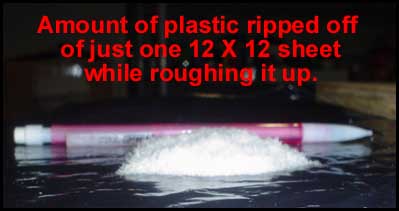
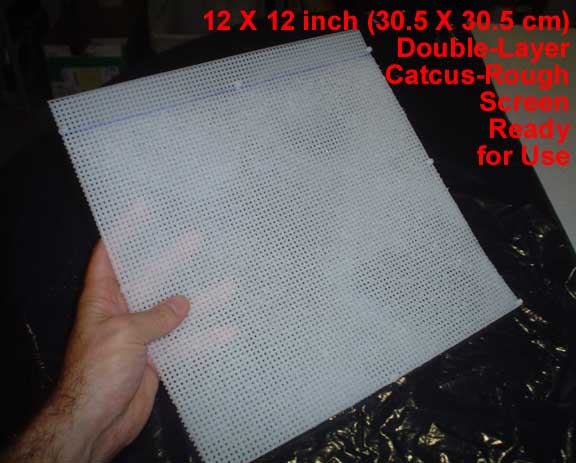
To demonstrate how rough the screen should be, here is a video of a towel dropped on a rough screen:
http://www.radio-media.com/fish/CanvasTowellDrop1.mpg
...compared to a smooth screen:
http://www.radio-media.com/fish/CanvasTowellDrop2.mpg
Nano scrubbers: In my last update, I said a coffee can would make a good nano scrubber. I meant a plastic coffee can.
Wattage: Your goal should be to get at least 0.5 watts of CFL (compact flourescent light) for each gallon of water, for medium filtering. For high filtering, get 1.0 watts per gallon. And don't use incadescent bulbs... they are much too hot and use too much power. The biggest CFL bulbs you should use should be 45W. If you need more, use extra bulbs, not a bigger bulb.
Be sure not to run bulbs 24 hours.
Be careful of overflowing skimmers; there is a lot of ammonia in that skimmate. A scrubber will help eat that ammonia if it overflows.
If you have cyano on your screen, you need more flow and/or more light.
If you smell any kind of "algae" smell while the scrubber is running, you need more flow.
If your tank has gotten rid of the nuisance algae, but cyano seems to be increasing, this is normal. Cyano does not eat nitrate and phosphate like algae does, so after your scrubber has starved the nuisance algae, the cyano has more room to grow. But if you keep your scrubber running strong and proper, the cyano will fade too.
If you have rubbery green algae, it means the flow is getting cut off and the algae is baking.
The best current spectrum for the bulb is 3000K (550 nm). This is yellowish-greenish, and it fits right in the middle of the red and the blue peaks of photosynthesis:



Pipe: Slots deliver much more water than drilled holes. Keep this in mind when figuring out how much flow you need.
Sump growth: Some people have open bulbs which light up the sump, and they are growing algae there. You don't want this to happen, so you need to use reflectors, or even foil, to block the light.
Coralline: Since phosphate will slow down coralline growth, you will start seeing more coralline as your phosphate drops in your water.
Advanced DIY trick: For those who can build such a thing, if you could build a top-off device which would shut off the flow to the screen, and then run your FW top-off water on it, then switch back to the regular flow, you would be able to extend the time between cleanings because the pods would be kept in control.
Dead fish: Scrubbers handle dead fish wonderfully; since ammonia is algae's favorite food, when a fish dies the algae will consume as much of the ammonia as it can, which could save your tank if the fish dies overnight. A skimmer, however, does not remove ammonia at all.
What equipment comes first: With regard to scrubbers, here are a few points to consider when planning which device should come before which other device (if you use them):
Skimmer: It should come before the scrubber and after the display, so that it does not remove the pods that come from the scrubber (if you need pods).
UV: Also should come before the scrubber and after the display, for same reason.
Mechanical filters/socks: Same as UV and skimmer. These trap food and pods (which rot and add Nitrate and Phosphate to the water), and thus should be the first thing you should stop using unless you change/clean them daily (but then you are removing the food for the corals.)
/>
PO4/N03 removers: Really doesn't matter because N and P are the same throughout the system.
Fuge LR/LS/Macro: Doesn't matter, as far as nutrient removal is concerned.
Bio Balls (!): Should be removed slowly, unless you have massive amounts of fish, and little rock/sand.
Screens: I will be selling ready-to-use screens soon. But until then, it's best to use two layers of extremely-rough plastic canvas, using a hole-saw (and about an hour) to rough up all four sides of the two sheets:





To demonstrate how rough the screen should be, here is a video of a towel dropped on a rough screen:
http://www.radio-media.com/fish/CanvasTowellDrop1.mpg
...compared to a smooth screen:
http://www.radio-media.com/fish/CanvasTowellDrop2.mpg


